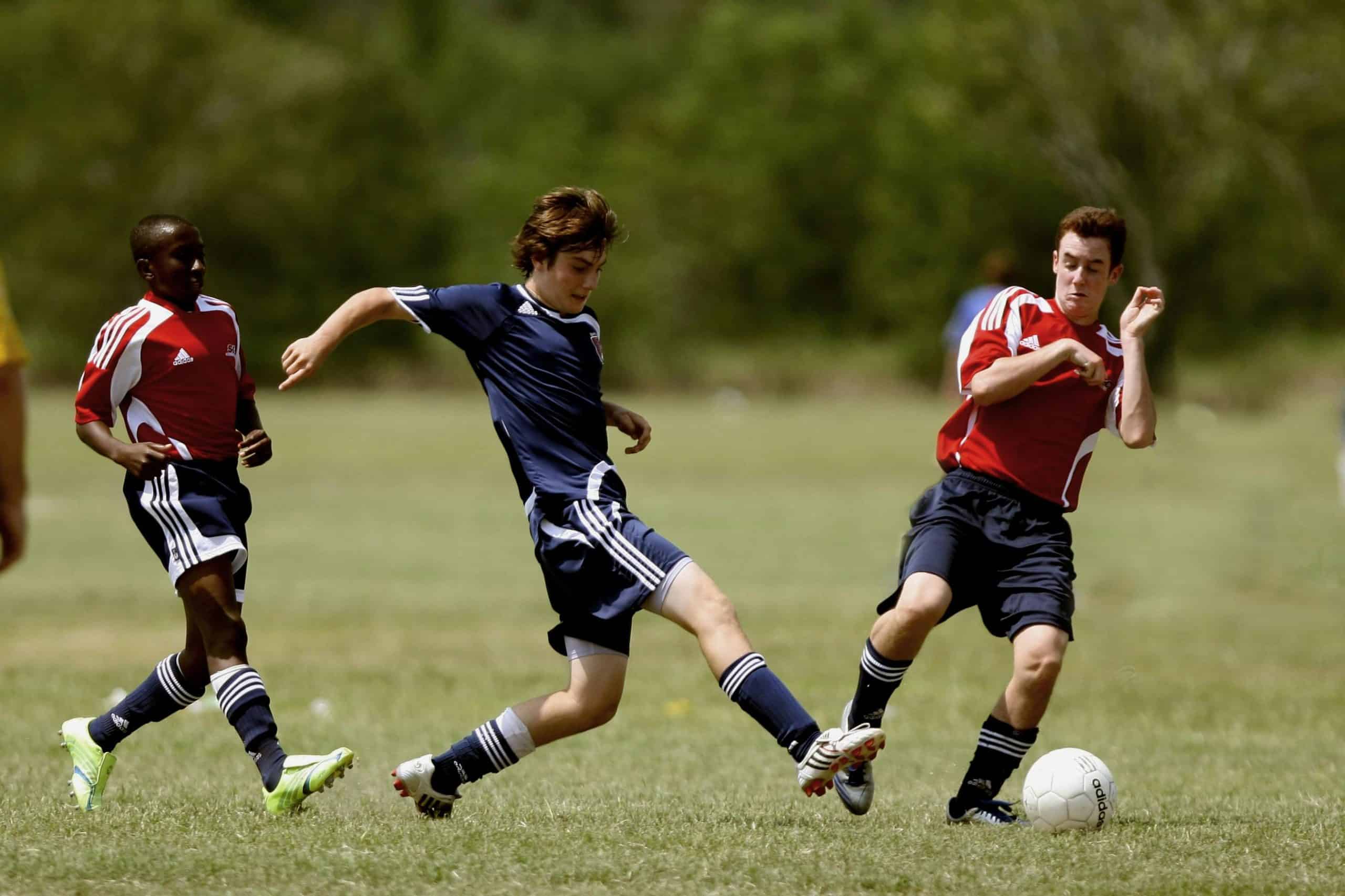No sport is immune to the risk of injury and football is no exception. Athletes at all levels of play, from youthful scholars to seasoned professionals, face the challenge of maintaining optimal performance without increasing their susceptibility to injuries. A myriad of factors such as strength, speed, and training methods play crucial roles in preventing injuries. The field of biomechanics has become a pivotal tool in injury prevention, offering new insights and techniques that can help players reduce the risk of suffering a debilitating injury. This article explores the latest techniques in biomechanics that can help football players prevent injuries.
The Role of Biomechanics in Sports Medicine
The realm of sports medicine has been revolutionized by the advent of biomechanics, a discipline that analyzes the mechanical principles of human movement. By examining how athletes move, biomechanics can provide important data on the most efficient and safe ways to perform physical activities. For football players, this is particularly crucial as it directly relates to their performance and injury risk.
Avez-vous vu cela : How can football players effectively utilize video games for mental training?
Biomechanics can help identify alterations in players’ movement patterns that might indicate a heightened risk of injury. For instance, a change in a player’s running technique could suggest a potential knee injury. Understanding these patterns can guide training practices and preventative measures to reduce injury risk. It’s not just about raw strength or speed, but also about how an athlete’s body moves and responds under stress.
Strength Training and Biomechanics
Strength training has long been a staple in football training regimens. However, the advent of biomechanics has enriched our understanding of how strength training can be structured to minimize injury risk.
A lire aussi : How can football players improve their balance and coordination for better dribbling skills?
Strength training is no longer only about lifting heavy weights. Instead, it’s about using data from biomechanics to design training programs that enhance the specific muscular strengths needed for football. Biomechanics allows trainers to identify the specific muscles that are critical for key football movements and tailor exercises to strengthen these muscles.
Additionally, by analyzing the movements involved in football, biomechanics can help design strength training exercises that mimic these movements, making the training more sport-specific. For instance, understanding the biomechanics of a football kick can guide the design of strength training exercises that strengthen the muscles involved in the kick, reducing the risk of knee injuries.
The Promise of High-Speed Biomechanics
With the rise of technology, high-speed biomechanics has become an exciting field in injury prevention. High-speed cameras are now used to capture athletes’ movements in detail, providing a rich source of data for biomechanical analysis.
In football, high-speed biomechanics can be particularly useful in analyzing the running styles of players. By capturing players’ running patterns at high speed, it’s possible to identify risk factors for injuries such as ankle sprains and knee ligament tears. For example, players who land with their knee in a certain position might be at a higher risk of injury.
Once these risk factors are identified, training programs can be developed to modify players’ running styles and reduce these risks. Coaches and athletes can then use this information to improve technique and decrease the likeliness of certain injuries.
Biomechanics and Recovery
Injury is not a full-stop in an athlete’s career, rather, it’s a bump in the road. Biomechanics is not only useful in injury prevention but also in injury recovery.
When a player is recovering from an injury, biomechanical analysis can be used to monitor their movement patterns. This can provide important insights into how well the player is healing. For example, if a player is recovering from a knee injury, biomechanical analysis of their running patterns can reveal if they are favoring their injured knee.
Moreover, by understanding the biomechanics of the injury, specific exercises can be designed to aid recovery. For instance, if a player has suffered a knee ligament injury, exercises can be designed to strengthen the muscles that support the knee, aiding in the recovery process and reducing the risk of future injuries.
The Future of Biomechanics in Football
The field of biomechanics is always evolving. As our understanding of how the human body moves improves, so too will our ability to prevent and treat injuries in football.
In the future, real-time biomechanical analysis might become a reality. This would allow coaches and medical staff to monitor players’ movement patterns in real-time during a game, potentially identifying injury risks before they lead to an actual injury.
In addition, as our understanding of the biomechanics of football-specific movements improves, training programs will become more specialized. This will lead to training regimens that are tailored to each player’s specific needs, further reducing the risk of injury.
Whether you’re a scholar just starting in the sport or a professional football player, understanding the biomechanics of your body can have a profound impact on your performance and, more importantly, your longevity in the sport. With the latest techniques in biomechanics, the game of football is poised to become safer and more efficient.
Biomechanics in Understanding ACL Injuries in Football
Anterior cruciate ligament (ACL) injuries are among the most common and severe injuries that football players face. Biomechanics has proven instrumental in understanding the causes and prevention of such injuries.
The ACL is a key ligament in the knee joint, critical for stability and movement. A sudden change in direction or speed, common in football matches, can put excessive pressure on this ligament, leading to an ACL injury. By using biomechanics, we can understand these forces and movements and develop strategies to reduce the risk of ACL injuries.
Research in sports medicine has shown that certain movement patterns might increase a player’s risk of an ACL injury. For example, players who land with their knee extended or who have a high knee abduction moment (a measure of the force on the knee during landing) are at a higher risk. These insights, available through the study of biomechanics, can guide coaches and trainers to correct potentially harmful movements.
Furthermore, through biomechanics, we can design specific exercises to strengthen the muscles that support the ACL. This can reduce the pressure on the ligament and decrease the risk of injury. For instance, exercises that strengthen the quadriceps and hamstrings, the key muscles supporting the knee joint, have been found beneficial in preventing ACL injuries.
Monitoring Training Loads with Biomechanics
The relationship between training loads and the risk of injury is a critical area of research in sports medicine. Monitoring training loads can help avoid overuse injuries, a common type of injury in football players due to the rigorous and demanding nature of the sport.
Biomechanics provides a scientific basis for monitoring and managing training loads. By understanding the forces that result from different types and volumes of training, coaches and trainers can tailor training programs to the needs of each individual player.
For example, a study from the Journal of Sports Medicine found that when players had a sudden increase in training load, they were more likely to suffer lower limb injuries. Biomechanics can help identify these sudden increases and guide adaptations in training loads to prevent injuries.
Moreover, in sports like football where players need to frequently change direction, biomechanics can provide insights into the safest and most efficient ways to perform these movements. This can help prevent injuries associated with sudden changes in direction, a common cause of knee and ankle injuries in football players.
Conclusion: Biomechanics – A Game-Changer in Football
The value of biomechanics in football isn’t limited to just injury prevention. It plays a pivotal role in enhancing player performance, recovery post-injury, and shaping the future of training methods. As our understanding of biomechanics continues to grow, so too will its role in sports medicine.
Real-time biomechanical analysis, once a dream, is now on the brink of reality. This could revolutionize how we approach injury prevention in football players and potentially identify injury risks even before they cause actual harm.
With the growing influence of biomechanics, football training programs will continue to evolve, becoming more specialized and tailored to individual players’ needs. This will not only help reduce the injury risk but also enhance players’ performance on the field.
In a nutshell, biomechanics is set to make the sport safer and more efficient for all, from enthusiastic scholars exploring the sport on Google Scholar to the seasoned professional players in the American football leagues. Whether it’s understanding an ACL injury, adjusting training loads, or making real-time decisions during a game, biomechanics is truly a game-changer. As we move forward, the integration of biomechanics into everyday practice will continue to transform the landscape of football and sports injuries.











